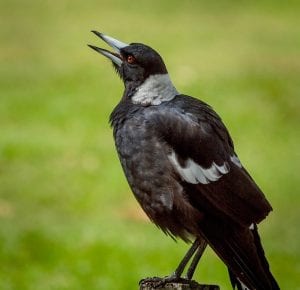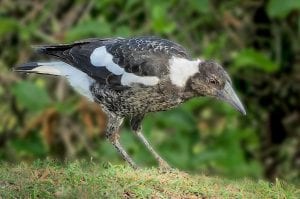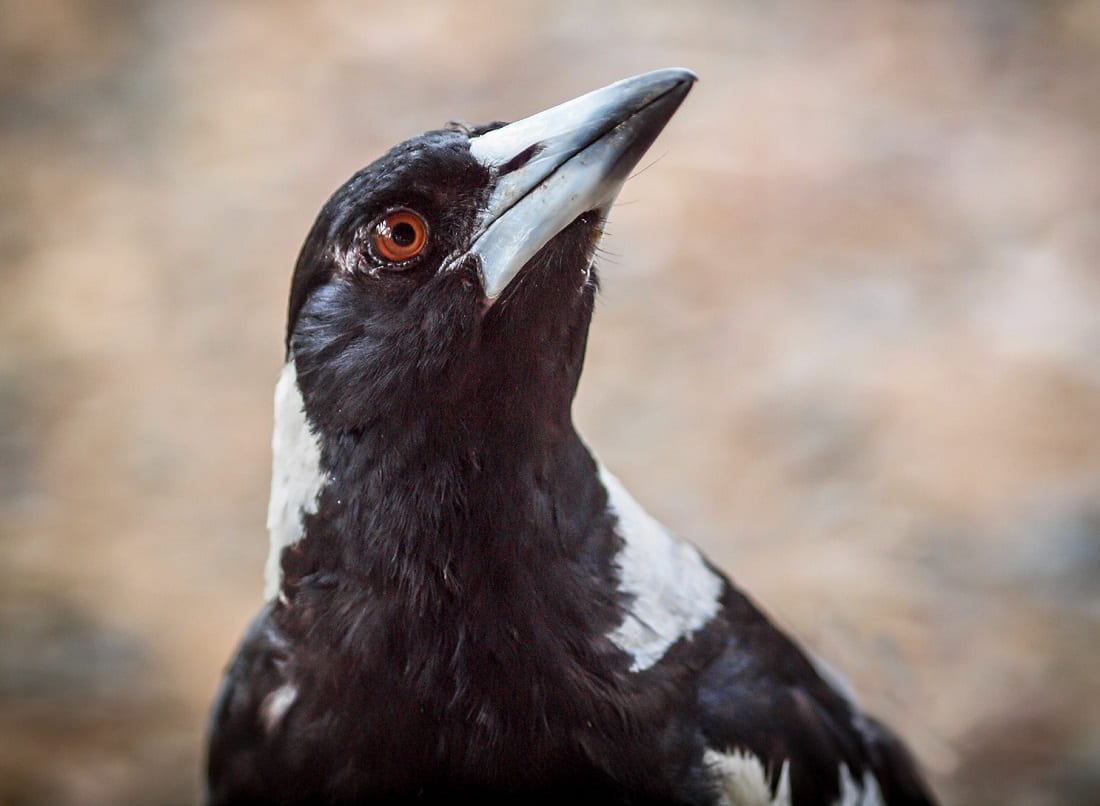Tags: Magpie. Wildlife. Birds. Australian wildlife.
AUSTRALIAN BIRD OF THE YEAR AUSTRALIAN MAGPIE – GYMNORHINA

Guardian Australia bird of the year poll in 2017 came up with a pretty surprising result. The Australian Magpie was the winner. Not far behind was the Australian White Ibis pipping the Laughing Kookaburra which took out third place.
People who have experienced the endearing side of magpies may be delighted with the finding while those who have been attacked and injured by swooping male magpies may disagree with the result.
It has been established that only a very small percentage – less than 5% – of male magpies actually attack. While nesting and when the babies are still in the nest seems to be the times when agro magpies choose to dive bomb selected targets. Some people can walk or ride through the magpie war zone with no fear of being attacked while others will be targeted every time. Some magpies only attack people on bikes while others choose victims such as children on school grounds or hikers in bushlands.
Magpies are territorial and usually occupy a reasonably small area. Lots of their territories are entirely within urban surrounds and some studies have established that they can recognize people. Some say that magpies can recognize every person in their territory. They can become very tame and make lifelong friendships with people who feed them. Many, many households have daily visits from their resident magpies singing their melodious chorus as a reminder that they are there for a treat.
It is best to feed birds food that they will normally eat. Magpies eat grubs and insects and just about anything else but not all foods are good for them. Bread is a big no, no and should not be fed to any bird. After nesting these magpies will often bring their young to be introduced to their human friends.

Magpie Singing
It is supposed that if the magpies in your area know you to be friendly you will not be bothered during the nesting season which is from August to November. Some common methods of trying to avoid an attack are to paint a pair of eyes on the back of your helmet or hat. The theory is that the magpie won’t attack if it thinks it is being watched. This, however, doesn’t seem to work.
Spikes on the helmet when riding or carrying an umbrella while walking are more effective but not foolproof. The best preventative is to try to avoid the area if possible during nesting. Magpies will nearly always attack the head from behind and occasionally from the side. All Australian Magpies are black and white with the markings varying over the 8 subspecies spread across Australia.
They are 37-43 cm in length and very common breeding residents on Bribie Island living up to 20 years. Their nests high up in trees are made of sticks with a bowl like centre which is lined with grass and hair. Most magpies mate for life while some prefer to change their partners occasionally. If the male is relocated or dies during nesting the female will almost immediately take on another male who strangely enough will help defend and nurture the adopted chicks. Usually, 3-4 eggs are laid and are incubated for 20 days.
When the chicks hatch they are without feathers and totally blind. After a week feathers begin to grow and after a month they are ready to fly. The survival rate is not high for the young chicks with only about 14% surviving. Snakes, monitors, raptors, feral and domesticated cats take their toll.

Baby Magpie
Magpies have adapted very well to human habitat. In some areas, their numbers are increasing while in others they are declining. They are excellent mimics and imitate calls of other birds and sounds they hear such as car horns and music etc. Their caroling songs have amazing, complex flexibility.
They have very good hearing and walk along the ground often with their head turned to one side listening for movement in the grass or grubs under the ground. Love them or hate them Magpies are truly ingrained in the Australian scene and their beautiful melodious caroling is a familiar sound to anyone who cares to listen.
Other Articles
https://thebribieislander.com.au/paperbark/
